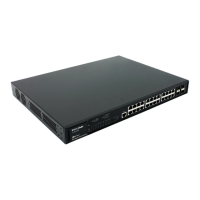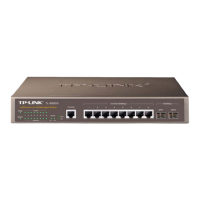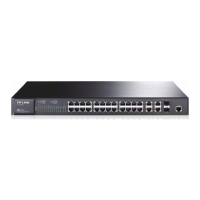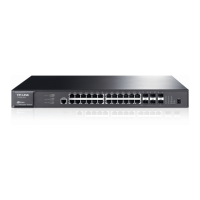FF0X::
X ranges from 0 to F. These multicast addresses are
reserved and shall never be assigned to any multicast
group.
Table 8-3 Reserved IPv6 Multicast Addresses
The solicited-node multicast address is a multicast group that corresponds to an IPv6 unicast or
anycast address. It is usually used for obtaining the Layer 2 link-layer addresses of neighboring
nodes within the local-link or applied in IPv6 Duplicate Address Detection. A node is required to
join the associated Solicited-Node multicast addresses for all unicast and anycast addresses that
have been configured for the node's interfaces.
IPv6 Solicited-Node Multicast Address Format:
FF02:0:0:0:0:1:FFXX:XXXX
The IPv6 solicited-node multicast address has the prefix FF02:0:0:0:0:1:FF00:0000/104
concatenated with the 24 low-order bits of a corresponding IPv6 unicast or anycast address.
2. IPv6 Multicast MAC Address
The high-order 16 bits of an IPv6 multicast MAC address begins with 0x3333 while the low-order
32 bits of an IPv6 multicast MAC address are the low-order 32 bits of the IPv6 multicast IP address.
The mapping relationship is described as the following figure:
Figure 8-3 Mapping relationship between multicast IPv6 address and multicast IPv6 MAC address
The high-order 16 bits of the IP multicast address are 0x3333, identifying the IPv6 multicast group.
The low-order 32 bits of the IPv6 multicast IP address are mapped to the multicast MAC address.
Multicast Address Table
The switch is forwarding multicast packets based on the multicast address table. As the
transmission of multicast packets can not span the VLAN, the first part of the multicast address
table is VLAN ID, based on which the received multicast packets are forwarded in the VLAN
owning the receiving port. The multicast address table is not mapped to an egress port but a group
port list. When forwarding a multicast packet, the switch looks up the multicast address table
based on the destination multicast address of the multicast packet. If the corresponding entry can
not be found in the table, the switch will broadcast the packet in the VLAN owning the receiving
port. If the corresponding entry can be found in the table, it indicates that the destination address
should be a group port list, so the switch will duplicate this multicast data and deliver each port one
copy. The general format of the multicast address table is described as Figure 8-4 below.
109
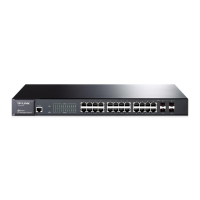
